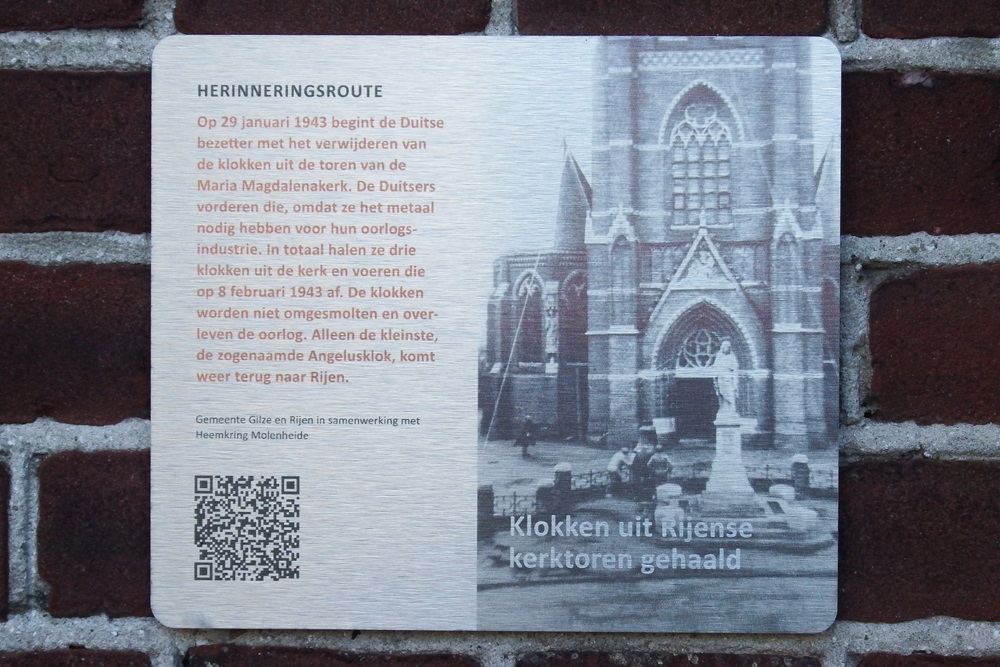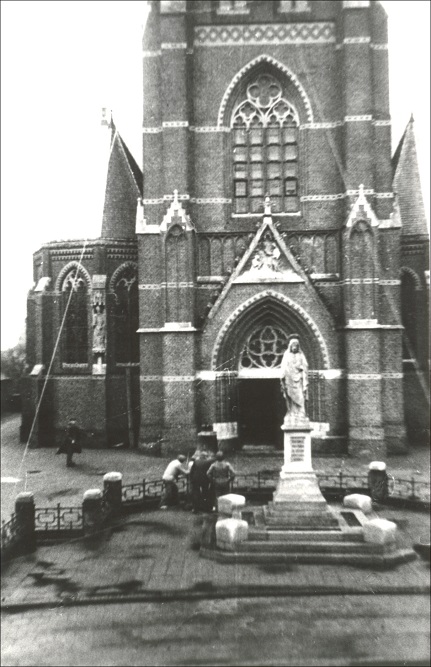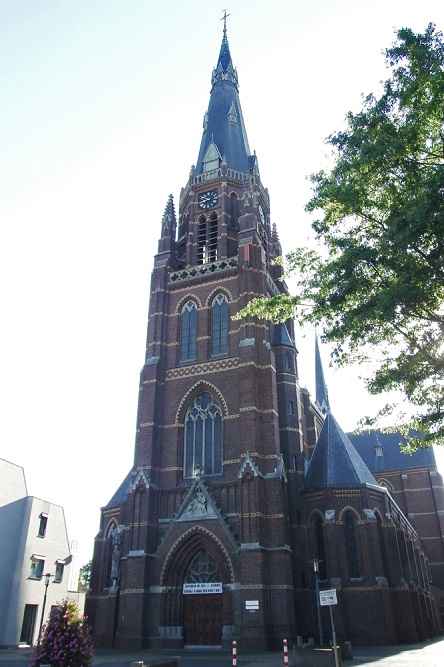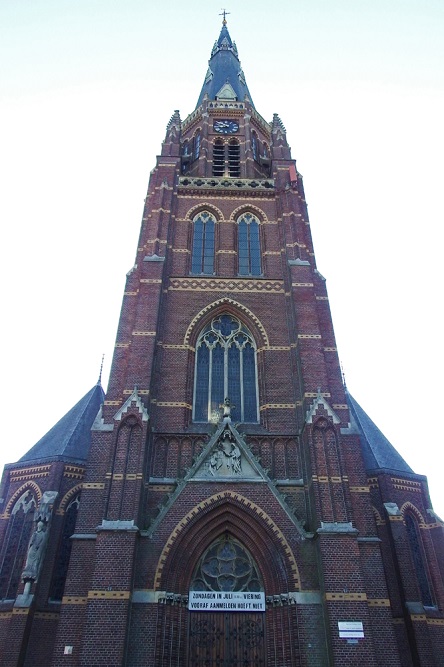Memory Route World War ll Clocks Taken From The Church Tower in Rijen
In the Municipality of Gilze and Rijen is a memory route created in memory of the Second World War.
In a number of places there is a sign with a description of what happened at that place in the Second World War.
CLOCKS TAKEN FROM CHURCH TOWER IN RIJEN
During the war, the German war industry quickly ran out of all kinds of raw materials, including metals. Therefore, on June 18, 1941, a first metal ordinance was passed, with all copper, nickel, tin and lead objects to be returned (except monuments, church bells, church service objects, organs, museum pieces, folk costumes, order and medals, coins and objects with historical, artistic or antiquarian value). The Germans counted on 8,000 tons of returned metal; it only became 3,000. Half came from business, the other half from citizens. Many citizens hid their valuable and precious things.
Because the yield was disappointing, the German occupier decided on more rigorous measures. A second metal ordinance followed on July 23, 1942, including church bells. The Dutch archbishop De Jong immediately protested in a letter to the German Reich Commissioner Seyss-Inquart. The church bells were sacred objects of ecclesiastical worship, and it was impossible to participate in the implementation of the metal ordinance due to conscientious objection. The occupier had no use for this.
In late October 1942, the Germans began to disassemble clocks from towers. The government reimbursed the church bells on the basis of NLG 75 per 100 kg of bell metal.
On December 9, 1942, Archbishop De Jong sent a notice to church boards, requesting the chairman and secretary to draw up a protocol. It should contain:
the diameter of the bells that the Germans would take with them;
if possible the weight;
the name of the watering can and the year of the casting;
any other markings on the clocks;
whether or not the clocks belonged to the so-called protected group.
Frans van Beijsterveldt, a contractor from Rijen, was commissioned by the church board to map these data from the Rijense bells. The following three bells hung in the tower of the Mary Magdalene church:
Clock 1, with a diameter of 82 cm, height 67 cm;
Clock 2, with a diameter of 125 cm, height 110 cm, with the year 1905;
Clock 3, with a diameter of 100 cm, height 90 cm, with the year 1905.
A fourth bell, the so-called Angelus bell, hung above the cross of the church. This was the smallest bell of a chime (number of bells) and had the highest tone. The Angelus clock used to be rung daily at 6 a.m., noon, and 6 p.m. Those were the times when Roman Catholics were called upon to pray the Angel of the Lord (or the Angelus). Frans van Beijsterveldt recorded the following information about the Angelus clock in his report:
- a clock, with a diameter of 51 cm, height 37 cm, with the inscription:
PETER VANLIEN GHEIN HAS CAUGHT ME MCCCCCCXVI (1616)
Despite its age (from 1616), the Angelus clock was also removed from the church by order of the Germans. The exact date of this is not clear: it happened on February 1 or 2, 1943. After a few days, on February 8, 1943, the Germans took all four removed clocks to depots. The intention was to take them to a smelter from there. This turned out not to have happened after the war. The Germans had hung the bells elsewhere. If the parish wanted to get the bells back, it had to organize it itself at its own expense. Only the Angelus clock finally returned to Rijen.
Do you have more information about this location? Inform us!
Source
- Text: TracesOfWar
- Photos: Peter van Hoek (1, 3, 4), Heemkring Molenheide (2)
- www.heemkringmolenheide.nl
Nearby
Point of interest
- Former German Settlement Siedlung Rijen - Rijen (Gilze en Rijen)
- Memory Route World War ll Siedlung built - Rijen (Gilze en Rijen)
- Memory Route World War ll Ammunition Train Station Rijen - Rijen (Gilze en Rijen)
Monument
- Memorial Chapel Rijen - Rijen (Gilze en Rijen)
- Memorial Killed N.S. Employee Rijen - Rijen (Gilze en Rijen)
- Liberation Route Marker 143: Gilze-Rijen airfield - Rijen (Gilze-Rijen)
Cemetery
- Graves Civilian Victims Catholic Cemetery Hulten - Hulten (Gilze en Rijen)
- Dutch War Grave Roman Catholic Cemetery Dorst - Dorst (Oosterhout)
- Commonwealth War Graves R.C. Cemetery Laurentius Dongen - Dongen
Remembrance Stone
- Stumbling Stone Hoogstraat 80 - Oosterhout
- Stumbling Stone Klappeijstraat 46 - Oosterhout
- Stumbling Stone Leijsenhoek 73 - Oosterhout
Fortification
- Remnant Bunker Airport Gilze Rijen - Molenschot (Gilze en Rijen)
- Remnant Bunker Airport Gilze Rijen - Molenschot (Gilze en Rijen)
- Remnant Bunker Airport Gilze Rijen - Molenschot (Gilze en Rijen)








